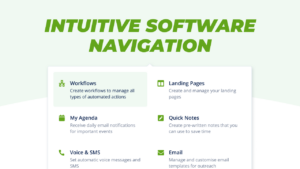In the world of ecommerce, providing a seamless and intuitive user experience (UX) is paramount to the success of an online business. A well-designed and user-friendly ecommerce website not only attracts potential customers but also keeps them engaged, encourages conversions, and fosters long-term customer loyalty. In this article, we will explore the key best practices for ecommerce UX, focusing on clear theoretical principles that can optimize the online shopping experience.
Responsive and Mobile-Friendly Design
With the ever-increasing use of mobile devices, it is crucial for ecommerce websites to have a responsive design that adapts seamlessly to different screen sizes. Responsive design ensures that users can easily navigate and interact with the website on any device, providing a consistent and engaging experience across platforms.
Intuitive Navigation

Clear and intuitive navigation is essential to help users find what they are looking for quickly and effortlessly. Implementing a well-organized menu structure, prominent search functionality, and breadcrumb trails helps users orient themselves within the website and easily explore different categories and products.
Streamlined Checkout Process
A frictionless and efficient checkout process is vital to reduce cart abandonment rates. By minimizing the number of steps required to complete a purchase and offering guest checkout options, you can enhance the overall user experience and increase conversion rates. Additionally, incorporating progress indicators and clear instructions throughout the checkout process can instil confidence in users and reduce any potential confusion or frustration.
Visual Hierarchy and Clarity
Using a visually appealing layout with a clear hierarchy of information helps users focus on key elements and understand the website’s content at a glance. Employing appropriate font sizes, spacing, and colour contrast ensures readability and accessibility. Utilize clear and concise headings, bullet points, and product descriptions to guide users and facilitate informed decision-making.
High-Quality Product Images and Videos
Visual content plays a crucial role in ecommerce UX. Providing high-quality product images from multiple angles and enabling zoom function allows users to examine products in detail, enhancing their confidence in making a purchase. Including videos showcasing products in action can further enhance engagement and provide a more immersive experience.
Effective Search Functionality
A robust search feature is essential for users to find specific products quickly. Implementing features such as autocomplete suggestions, filters, and sorting options helps users refine their search and find relevant products efficiently. Additionally, incorporating intelligent algorithms that consider user behaviour and preferences can improve search accuracy and deliver personalized results.
Clear Call-to-Actions (CTAs)

Well-designed and prominent call-to-action buttons help users understand the desired actions and guide them through the purchasing process. Using concise and action-oriented labels like “Add to Cart” or “Buy Now” reduces ambiguity and encourages conversions. Employing visually distinct and contrasting colours for CTAs makes them stand out and facilitates easy identification.
Trust and Security Signals
Building trust with users is crucial for ecommerce success. Displaying trust symbols, such as security badges, SSL certificates, and customer testimonials, helps establish credibility and reassures users about the safety of their personal information. Clearly communicating secure payment options and transparent return policies also instils confidence in users and encourages them to make a purchase.
Personalization and Recommendations
Leveraging user data and preferences to provide personalized product recommendations can significantly enhance the ecommerce experience. By understanding user behaviour, browsing history, and purchase patterns, you can offer tailored suggestions, cross-sell, and upsell relevant products, thereby increasing customer engagement and driving conversions.
Continuous Testing and Optimization

To ensure ongoing improvement of ecommerce UX, it is essential to conduct regular usability testing and gather feedback from users. Analyzing user behaviour, conducting A/B testing, and monitoring website performance metrics allow for identifying pain points, optimizing designs, and implementing iterative improvements to deliver an exceptional user experience.
Conclusion
By implementing these ecommerce UX best practices, online businesses can create a user-friendly and immersive shopping experience that enhances customer satisfaction, boosts conversions, and fosters long-term loyalty. Striving for a responsive design, intuitive navigation, streamlined checkout process, and clear visual hierarchy, combined with personalized recommendations and robust security measures, enables ecommerce websites to stand out in the competitive digital landscape and build a strong and loyal customer base.




